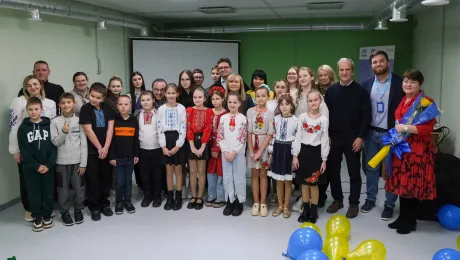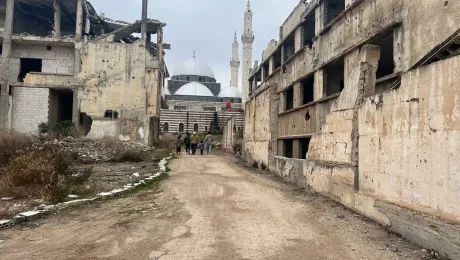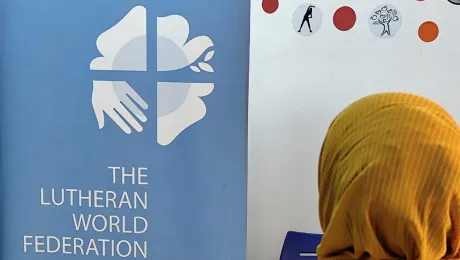
Punya Prasad Dangal lost his mother and granddaughter in the massive April 25 earthquake in Nepal. Photo: LWF Nepal
Agencies combine earthquake response
Kathmandu, Nepal/Geneva, 21 May 2015 - Punya Prasad Dangal was in Kathmandu when the earthquake hit on April 25. He saw people falling off motorbikes and running around trying to find a safe place to shelter. Then the tremor stopped. Five minutes later the mobile phone in his pocket rang and changed his life forever.
It was a call from his son, Tara, who was with the family in Nanglebhare, a remote area in Kathmandu district. "Our house collapsed. Grandma was inside the house when it happened. My daughter Samiksha is also missing," Dangal heard his son say.
“Everything became a blur after that,” Dangal recalls. With his second son, Binod, who works as a medic, he took a motorbike to Nanglebhare. On the way there, the phone rang again: the family had found the grandmother’s body. “The dead body of my mother was taken out of the debris and placed in a corner. My granddaughter was still missing," Dangal said. Only two days later was he able to retrieve her body. She had been playing in a neighbor’s house and was buried when the house collapsed.
Nanglebhare is one of the badly affected rural areas in Kathmandu district. More than 95 per cent of the mud and brick houses in the area have been destroyed. Dangal’s family is one of many who lost loved ones, and along with them, their animals and livelihood. People now live in the open. The villages have a shortage of latrines, increasing the threat of an epidemic.
After an assessment, the LWF found that government agencies were not distributing relief materials in this area. Though it is only 20km from Kathmandu, Nanglebhare is extremely hard to reach. The road, which starts at an elevation of 1800m, is navigable only in fair weather.
To provide initial relief, the LWF- a member of ACT Alliance - distributed blankets, tarpaulins, mattresses, ready-made food, soap and hygiene material to 135 families in the village. To help in a sustainable way, though, Nanglebhare has been selected as an “ACT Model Village.” The ACT members that make up the ACT Nepal Forum will combine their expertise in different aspects of relief work – water, sanitation, food, shelter, cash grants, psychosocial support and education to assist the village in all necessary areas.
“A joint response in all the emergency sectors is not only possible but also more effective and resourceful,” the forum of ACT members states, in a report.
Food and shelter are the most immediate needs of people, whose supplies are now covered by tons of mud and rock. "We could not take out anything from the debris and we have been surviving with the food brought in by our relatives," said Dangal. In Hindu culture, people mourn for 13 days while relatives bring in food. The family has been staying in a makeshift hut but with the monsoon coming, will need more than that.
"Rebuilding a place to live and arranging things to eat has become a tough challenge,” Dangal says. “But consoling your family after the death of loved ones is even harder.”
Donate to the LWF Nepal emergency
Visit the Nepal earthquake response page, the Nepal program page and the Nepal program site


